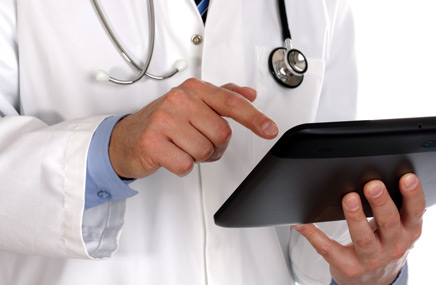Food for thought for brand managers.
Is your family physician your Facebook friend? Many are. Patients regularly send requests for medical advice to their doctor’s “Inbox.” Physicians are texting their patients—sometimes on the weekends—and many offices have adopted a system that allows online access to patient test results and current medical records.
Seem unusual? In fact, it may surprise you to know how rapidly this trend is catching on. A growing number of physicians are embracing technology as a means of communicating with their patients on a more frequent and personal level.
 2011 saw a boom in physician adoption and utilization of technology. According to a survey by QuantiaMD, more than 80% of physicians owned mobile devices and 30% owned tablets last year, figures that were far greater than those of the average population.
2011 saw a boom in physician adoption and utilization of technology. According to a survey by QuantiaMD, more than 80% of physicians owned mobile devices and 30% owned tablets last year, figures that were far greater than those of the average population.
But what’s more exciting is that physicians aren’t just using their devices for looking up new study or drug information, or for researching diseases. Some are using technology to enable greater, more personalized patient care—with an “old-fashioned” touch.
Technology is allowing physicians more time to get to know their patients and stay connected to their ongoing health and well-being. The old concept of “bedside medicine” is becoming a reality again. Physicians who embrace this concept finally have the time, and the right medium, to follow up on their patients’ care.
Here are just a few of the ways in which technology is enabling more one-on-one time with patients:
- Email/text follow-ups allow physicians to quickly and easily check-in on patients and to monitor progress.
- Digital photos enable faster, more convenient diagnosis. Got a rash? Take a picture, send it and get answers.
- Access to electronic medical records allows patients to take an active role in their healthcare and minimize the time it takes to receive valuable health information, such as test results.
- Social media connections, such as Facebook, Twitter and Pinterest, give physicians the ability to “follow” patients well beyond the office appointment.
- Virtual meetings/facetime-type software means you can have a one-on-one, face-to-face office visit just about anywhere.
Imagine the implications this movement has for healthcare, as well as for healthcare marketers. Technology has the potential to improve the attention and care we receive from our healthcare providers. Economic benefits could be possible with fewer office appointments, fewer hospitalizations, better patient compliance and greater overall lifestyle management.
As healthcare marketers, we can increase our research and insight into this growing trend, helping us understand what sort of meaningful presence we can have in this space, as well as its impact on our healthcare system and on the ever-changing role of our physicians in our lives.








